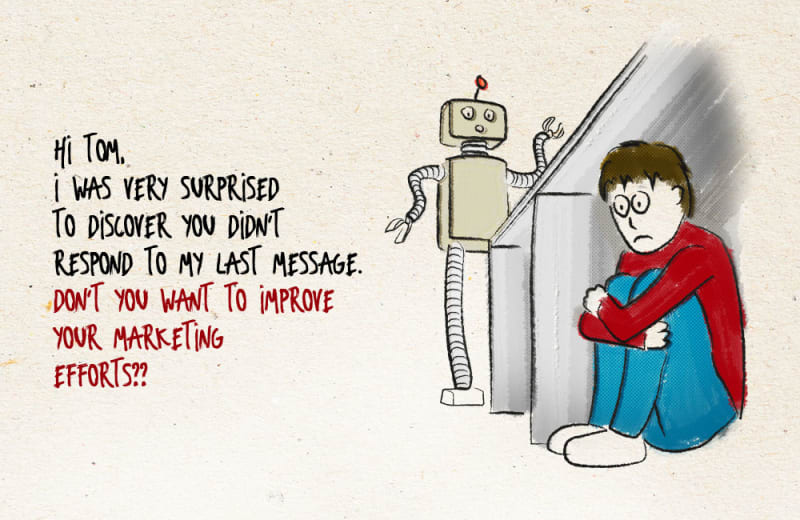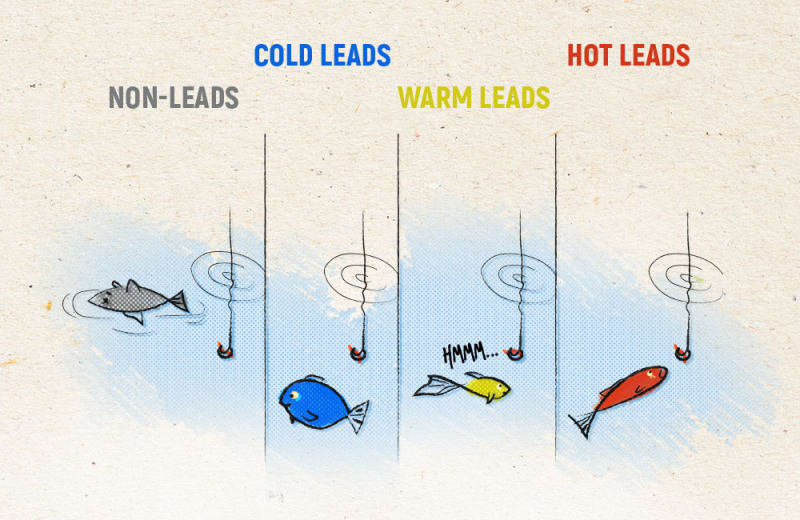From a marketer's perspective, the most significant advantage of digital experience platforms over basic CMSs are its built-in marketing automation functionalities. They work well in both B2C and B2B industries. One of these helpful functionalities is lead scoring. And what's great but often overlooked about lead scoring is that it's not an alternative B2B marketing method but an enhancement to every possible scenario you can use in your sales efforts.
I asked ChatGPT to suggest a couple of clever proverbs about sales for the opening of this blog post.
One of the firsts it came up with was, "The best salespeople know that the sale starts when the customer says no." It surprised me that this philosophy of relentless pursuit, from the days of hawkers and telemarketers, came to the mind of a robot that feeds on knowledge from the Internet.
After all, the Internet is supposed to give endless options for researching, targeting, and attracting customers already likely to buy from you, right? So is selling still all about persistence, like Ray Kroc used to say in the 60s, or are there cleverer strategies? Well, we no longer have to guess who might be interested in our product. We have plenty of analytics tools to help us figure this out.
The agency I work with sells custom web development. It's not easy, mainly because it means selling something that doesn't exist yet. So last year, we talked to different B2B marketing and sales specialists. We tried various outreach approaches, LinkedIn ads, social selling, cold mailing, and account-based marketing. Along the way, I began to wonder if we don't concentrate too much on the prospects we perceive as a good fit and too little on the ones that might perceive us as a good fit. The ones that like our communication style, appreciate our values, and enjoy our content.
The thing is, all the B2B marketing methods I mentioned before can work very well, but none of them work if you focus on the wrong people. Not focusing on the right leads is probably the main reason B2B marketing efforts sometimes fail. Lead scoring automation helps sort it all out.

To explain lead scoring, we should start with the differences between B2C and B2C sales.
a) Long and convoluted decision-making process
Whatever B2B products or services you offer, you don't interact only with top-level executives like CEOs and COOs but also with other members of the organization, such as middle managers, specialists, and interns. The sales process often involves multiple individuals, and it is crucial to effectively communicate and appeal to all of them before closing the deal.
b) A lot more steps between the first contact and closing the deal
B2B purchases are usually not based on emotions but on careful business analysis, comparing different offers, and discussions. A few weeks, if not months, will pass before you can close a big deal.
c) Great importance of building trust
When working with clients, it is essential to remember that they are not using their own personal funds but the company's money. Their decisions can impact the well-being of the company's employees or clients, so they may be cautious in their approach. In order to be successful in sales, it may be necessary to demonstrate your value and credibility rather than simply promote your product or service.
The various stages of the B2B sales process involve multiple points of contact with potential clients, each of which presents an opportunity to classify them as cold, warm, or hot leads. That way, you can focus your efforts where the greatest likelihood of closing a deal exists. This is where a tool like lead-scoring automation can be very helpful.

How does lead scoring work
Lead scoring means sorting users who interact with your brand based on their sales readiness. Let's look at your website as a selling machine to explain it. You may have great content and fine lead-generation tools on your website. You may collect a lot of data from users who register to watch your webinars, download your ebooks or get a quote for their projects. Are all of these users good leads? Well, no.
There are people who casually research offers, like students or your competitors. Some stumble upon your content by mistake, and others are considering something but quickly lose interest. Lead scoring automation helps you filter them out and find users who would consider doing business with you.
It does so by attributing users with points based on two factors:
a) Explicit score based on the user's available data, like job title, location, industry, company name, etc.
b) Implicit score based on user activity on your website, precisely how often they visit, open your emails and newsletters, click your links posted on social media, finish your articles, and so on.
It comes down to establishing a logical system that helps understand the client's journey. The process begins with gathering user data, including email address, to build a customer profile. This profile can be used to track engagement with your website and other interactions you have defined.
Once a user meets specific criteria you have established, they are awarded points. The total score assigned to the user can be used to trigger automated actions such as displaying personalized content or sending special offers via email.
Soon, each of your registered users is located somewhere on the chart defining cold, warm, and hot leads.

It sounds great in theory, but how can this mechanism be applied to specific industries and combined with other selling techniques and outreach activities?
Based on our experience with B2B marketing consultancies from last year, collected insights from social selling gurus, and our own efforts, we created an ebook called "How to get more clients without doing absolutely nothing new." To make it more digestible, we designed it in the form of a children's book.
Not to say B2B marketing is child's play, but automation tools certainly make it easier.

